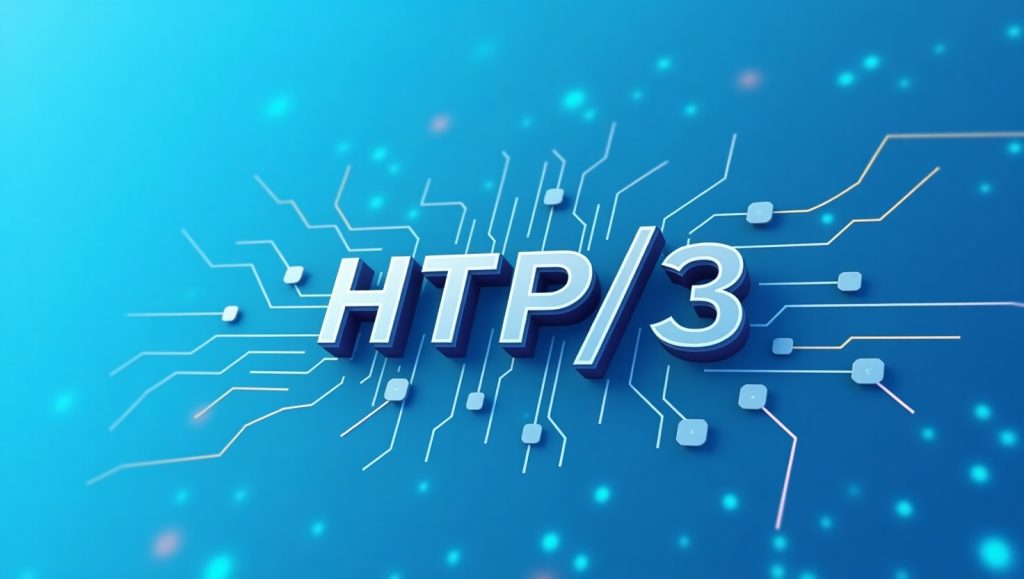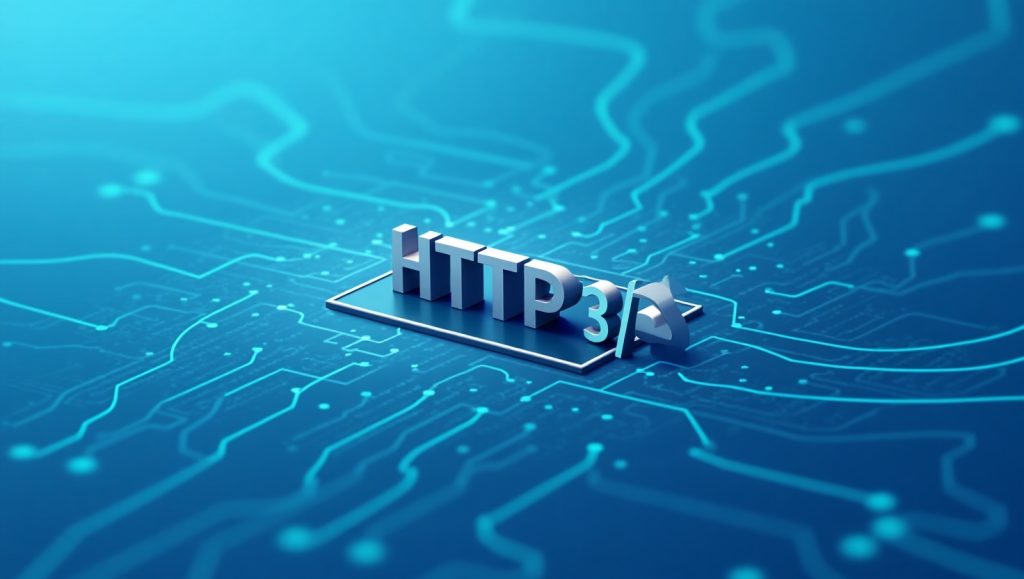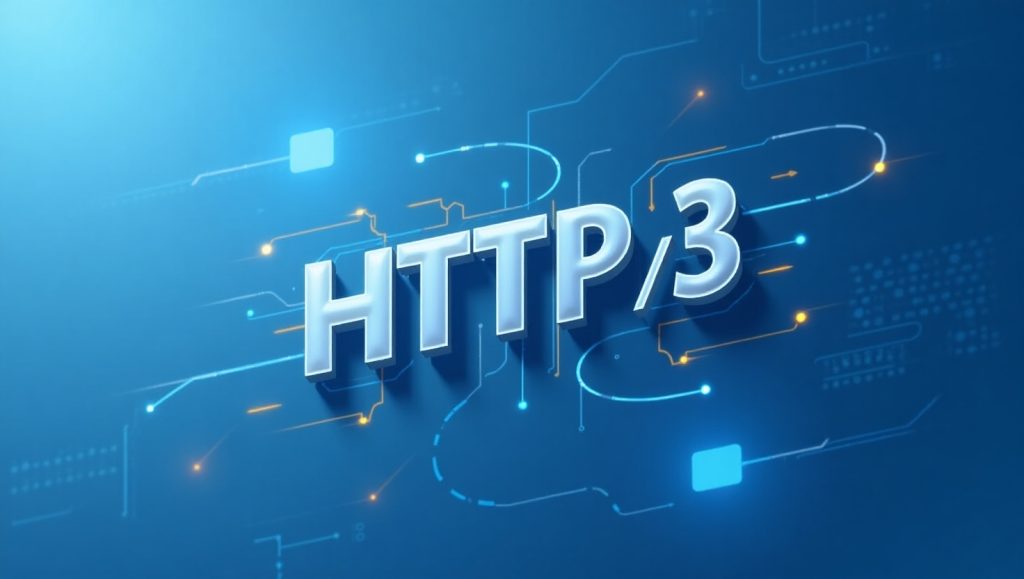
Understanding the Shift from HTTP/2 to HTTP/3
the web should communicate. Designed with the express purpose of rectifying long-standing challenges in web communication, HTTP/3 is wholeheartedly embraced by the digital world now. But exactly what distinguishes HTTP/3 and why is it deemed a consequential development? The instability regarding its transport is one major differentiator. Introduced as a new transport layer protocol by Google, unlike its older siblings, HTTP/3 avails of the QUIC transport working above it. In a manner contrasting with traditional TCP (Transmission Control Protocol) that overcomes due to some rigidity in the structure), QUIC transmits through UDP (User Datagram Protocol); this expeditiously elucidates the considerations upon which speed, reliability, and experience are established.
Now, HTTP/2 was particularly painful because of head-of-line blocking, whereby a lost packet would stall all other streams sharing the same connection. QUIC removes that by allowing streams to take on delays independently of one another. The improvement lies in seamless domain experience for the users, irrespective of their bad connections.
From a technical perspective, changes in protocols ensure that users get to their destinations more efficiently. Faster loading pages, fewer disconnections, and more secure handshakes all make for an experience that users won’t mind. So the transition to HTTP/3 will matter for anything from streaming video to online purchasing as soon as enough browsers and servers get on board with it.
What Makes HTTP/3 So Much Faster?

Speed is one of the biggest promises of HTTP/3, but it’s not just marketing fluff—it’s grounded in real technical enhancements that target the bottlenecks of previous versions.
QUIC’s Elimination of Head-of-Line Blocking
Sending and receiving a sequence of packets occurs when you visit a web page. HTTP/2 multiplexes all the traffic on the same TCP connection. If one packet should be lost or delayed, all others are forced to wait in line because of the head-of-line blocking. It is comparable to being stuck in traffic because the car in front is inoperative.
HTTP/3 uses QUIC, which avoids this limitation. Each data stream is free to advance on its own, so if one hiccup occurs, the entire thing doesn’t tank. Just that very slight difference translates to a big difference in loading times, especially while browsing on Mobile browsing experience or Wi-Fi connections that are quite often unstable.
So websites feel faster. Images load faster; there is no stuttering when scrolling; and content smoothly appears on pages. For a business, this means better engagement and lower bounce rates.
Faster Connection Establishment
Speed comprises another dimension, which is the speed for the establishment of connections. HTTP/3 is capable of reducing the overall time needed for the establishment of a secure connection through TLS (Transport Layer Security). In former protocols, several round trips from the client to the server had to be undertaken before anything could load.
QUIC has simplified this by integrating TLS directly into the transport layer itself. Users can start seeing content earlier and keep on skipping repetitive multiple handshakes. It is only on mobile devices, where latency matters the most, that this becomes advantageous.
All those improvements together have made HTTP/3 a real game changer, revolutionizing fast, smooth user experiences.
Why HTTP/3 Is More Reliable for Modern Websites
Reliability might not always grab the headlines like speed does, but it’s just as crucial—especially in today’s connected world where users expect everything to “just work.” HTTP/3 brings a new level of dependability that benefits both website owners and their visitors.
Better Performance on Unstable Networks
Not every internet connection is equal at the end of the day. Whether someone is using internet while in a packed cafeteria or if they are moving on trains with a spotty wi-fi network, that reliability has always been the case. This is where HTTP/3 comes into full view. Owing to its use of UDP and the way QUIC handles packet loss and recovery, HTTP/3 performs much better than its predecessors on unstable networks. Rather than slowing down or timing out, it still delivers data with minor interruption, which is even more advantageous to mobile users, who typically switch networks when moving.
It enables the system to recover from little hiccups in the connection without having to start the entire process, so users can carry on with their sessions in between undisturbed, even within less-than-ideal environments.
Seamless Connection Migration
Another unique quality of HTTP/3 that is worth mentioning is its ability to migrate connections. Since traditional TCP connections are linked to an IP address, changing the IP, like switching from Wi-Fi to 4G, breaks the session, which has to be re-established. QUIC moves this with HTTP/3. This allows sessions to move with the user, for instance, during online shopping while walking, streaming music, or anything similar. In such cases, the user does not even realize that a network has changed because his browser keeps the session alive.
Therefore, this reliability is invaluable for developers and businesses-something that builds user trust and adds to satisfaction in subtle yet significant ways.
Security and Privacy Improvements in HTTP/3
Security is a non-negotiable part of the Modern web protocols , and HTTP/3 steps up with improvements that make browsing safer without slowing anything down. These enhancements are built directly into the way HTTP/3 functions.
Built-In Encryption by Default
Perhaps best of all, QUIC is built around native encryption. In the previous versions, security was layered on top but it is actually rolled into the transport layer with QUIC . This means we are protected by default before transmitting any bytes, and herewith also minimizing the downgrade attack risk: tricking systems to authenticate into using older, less secure versions of a protocol.
In fact, even if a byte has not been transferred by the client, all connections are encrypted under HTTP/3 for good. QUIC employs inline TLS 1.3-integration for its transport, unlike earlier versions in which security had to be layered over it.
Not only is encryption a good idea, but it is also a signal of trust. Visitors are likely to be less willing to interact with a site they know is secure and HTTP/3 makes it such that extra efforts by developers are not needed at the same time.
Improved Privacy and Tracking Resistance
Other than encryption, HTTP/3 improves privacy by making certain types of surveillance and data sniffing more difficult. The comparatively quicker and less intrusive handshakes limit the metadata exposed in the initial connections and thus reduce the opportunities of third-party monitoring. That means more protection for everyone from ISPs or malicious users wanting to collect data. Moreover, this is an active approach to respecting user privacy, which is fast becoming essential in the ever-changing regulatory landscape.
Is It Time to Switch to HTTP/3?

The benefits of HTTP/3 are clear—but should every site rush to adopt it right away? It depends on your user base, hosting setup, and priorities. That said, for many modern websites, the answer is leaning toward “yes.”
Browser and Server Support Are Growing
As of now, major browsers like Chrome, Firefox, Safari, and Edge support HTTP/3. Large platforms such as Cloudflare, Google, and Facebook have already implemented it in production. This widespread support means your visitors are likely ready—even if they don’t know it yet.
Web hosting providers and CDNs are also making it easy to enable HTTP/3 with just a few settings. If you’re already using services like Cloudflare or Fastly, HTTP/3 might already be on, or just a toggle away.
Developers don’t need to rewrite code or redesign their infrastructure. The switch is largely handled at the server and protocol level, making the upgrade relatively painless for most teams.
Real-World Results: Better Metrics and Happier Users
Companies that have adopted HTTP/3 have reported measurable improvements. Faster page load times, fewer errors on mobile, and improved user engagement are common benefits. For eCommerce, media, and SaaS platforms, those improvements translate directly to revenue and customer retention.
A 2022 Cloudflare study showed up to 10–30% faster load times with HTTP/3 on mobile devices, which is a serious performance gain just from a protocol upgrade.
So, while HTTP/3 may not yet be mandatory, adopting it sooner rather than later ensures you stay ahead of the curve—and keep your users happy.
Conclusion
HTTP/3 isn’t just a new number in the protocol lineup—it’s a real evolution in how the web works. With faster speeds, more reliable connections, and built-in security, it addresses the key challenges users and developers face every day.
Whether you’re a developer managing infrastructure or a business owner focused on customer experience, HTTP/3 offers meaningful improvements that are worth embracing. As the internet grows and user expectations rise, protocols like HTTP/3 will play a major role in shaping a better, faster, and more secure web.